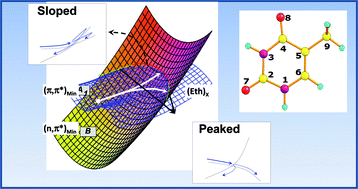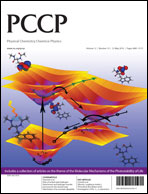The role of the seam of intersection between the lowest (π,π*) and (n,π*) excited states in the decay of electronically excited singlet thymine has been investigated with ab initio complete active space self-consistent field (CASSCF) calculations and direct dynamics variational multiconfiguration Gaussian (DD-vMCG) quantum dynamics on the full-dimensional CASSCF surface, with 39 degrees of freedom. The seam has a sloped-to-peaked topography, and the dynamics at the different segments of the seam have been studied by varying the initial conditions of the propagation. When the wave packet is directed to the peaked segments, part of it traverses the seam, stays on the (π,π*) state and heads towards decay to the ground state. In contrast to this, when the wave packet is driven to sloped seam segments it bounces back to the minimum of the (π,π*) state. Significant population transfer to the (n,π*) state is observed in both cases. The results suggest that a sloped-to-peaked topography can be used to control photochemical reactivity, by driving the wave packet to different regions of the seam where a different outcome of the propagation can be expected.

You have access to this article
 Please wait while we load your content...
Something went wrong. Try again?
Please wait while we load your content...
Something went wrong. Try again?


 Please wait while we load your content...
Please wait while we load your content...